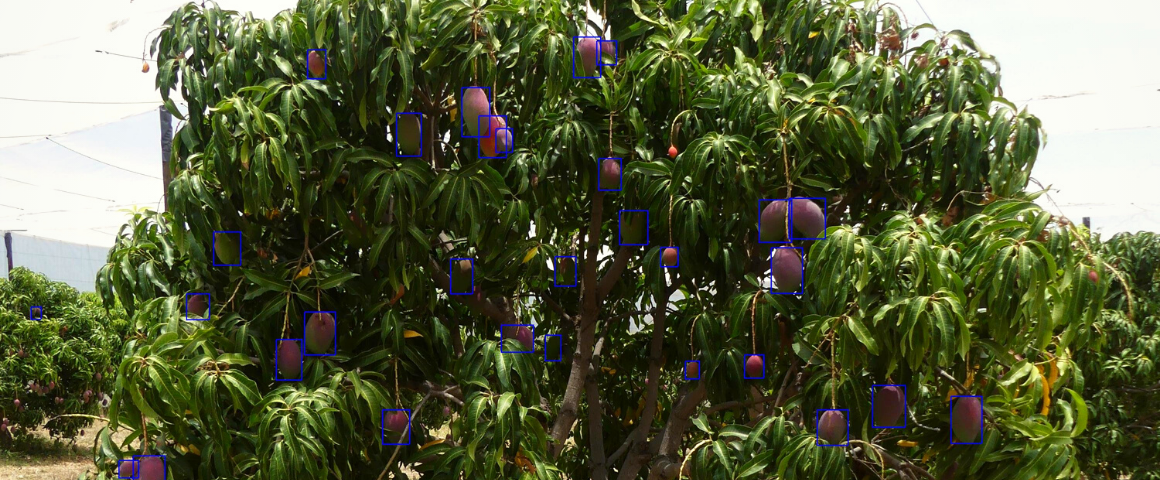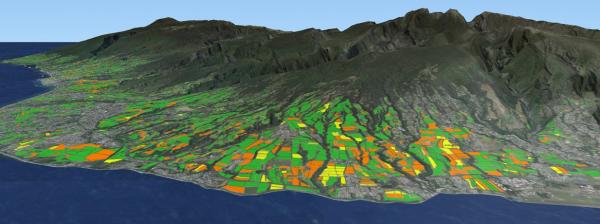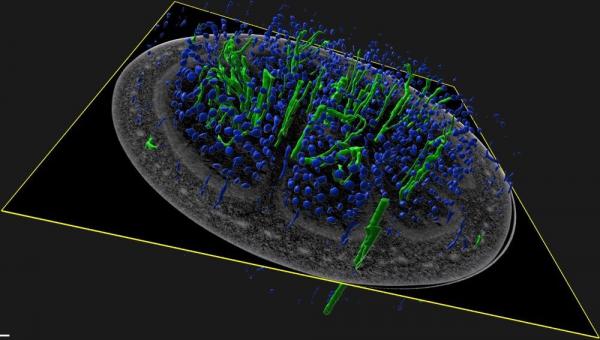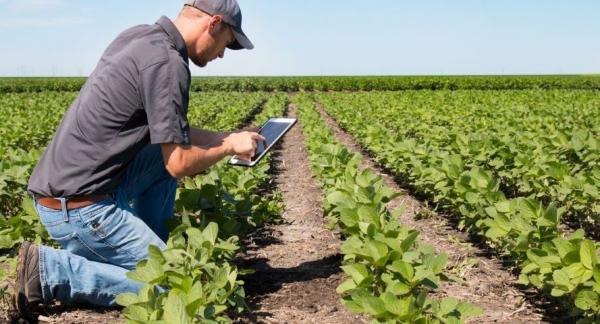Software and digital applications - Sustainable agriculture
- Home
- Work with us
- Cirad'Innov solutions
- Products and services
- Tropical fruit harvest forecasts: PixFruit® expertise
Tropical fruit harvest forecasts: PixFruit® expertise supporting the creation of decision-making tools

Pixfruit © Cirad
How to handle uncertainty in harvest forecasts
Measuring, estimating and predicting yield is a challenge shared by actors in agricultural sectors around the world. Uncertainty and lack of information have important logistical, organizational, agronomic and economic implications. Several levels are impacted, from the plant to the production basin. PixFruit® expertise makes it possible to acquire and make these yield estimates accessible: from the scale of the plant to the production area and countries, to the plot itself. The use of images and calculations adapted to each species, cropping system and pedoclimatic conditions make it possible to obtain these yield estimates
At the scale of a territory, all of this information, collected as closely as possible to the reality on the ground and based on scientific data processing, provides a more accurate view of the level and variability of regional production.
PixFruit® combines three major skills developed at CIRAD:
- image recognition via artificial intelligence driven by neural networks;
- harvest forecast calculations adapted to the fruit species and cultivation areas controlled by our scientific experts;
- co-construction of digital solutions, adapted to the needs of the various players in the sectors.
Stage of development
What are the strengths of PixFruit®?
With the support of artificial intelligence and data digitization, a decision support tool from PixFruit® expertise offers many advantages according to the needs of different types of users. It allows, among other things, to:
- identify and count the number of fruits present in the trees via the participatory collection of images taken in the field;
- determine the biological production of the tree according to its environment and the variety planted;
- extrapolate data at the scale of the orchard from a sampling that integrates the structural data of the orchard (area, density, varieties cultivated, etc.);
- analyze yields by production models on a remote server, estimate the production of the plot with measured precision (up to 95% precision);
- provide processed and synthesized information from these models, which can be consulted and downloaded on a WebApp: orchard yield, heterogeneity of intra and inter-plot production, average yield of the area, production potential, fruit availability, production monitoring, etc. .
To finalize the development of a decision support tool (DST), the partnership is based on collaboration with a digital player who will develop the back and front-end of the solution.
Ongoing research studies the predictions of fruit size, color and maturity, which will provide a basis for additional expertise.
PixFruit® at the service of the tropical fruit sectors
Building on the experience of the PlantNet® tool, a collaborative tool for plant recognition, PixFruit® benefits all players in the tropical sectors. From the application on mango and citrus fruits in Africa with the company Sowit, SoYield® was born, a concrete example of use, which was developed combining Mobile Application and WebApp addressing different users.
For producers
The expertise associated with a mobile application allows a better knowledge of their effective yields, and this as early as possible. This allows them to guide their decision-making in order to sell off the quantities of fruit before the end of the season (limitation of losses) or to find additional income if the harvest is not as good as expected. The objective is to secure these revenues and access to fresh or processing markets.
For traders, wholesalers and exporters
The data, which is quickly available and more reliable than traditional manual counting methods, secures sales estimates and makes it possible to anticipate contracts with distribution markets.
For support services, policies, science, etc.
The data collected and extrapolated to the scale of a territory, makes the production figures more reliable and makes it possible to refine the support actions for the sectors. Through the WebApp, the data is easy to process and export with a detailed analysis according to the desired spatial scale.
PixFruit® is an innovation that mobilizes the expertise of various CIRAD research units.
At the center of interdisciplinary interactions, the Amap research unit (Botany and modeling of the architecture of plants and vegetation) is an expert in detection processes by training neural networks. The unit develops many other skills with a view to modeling the development of plants and trees and the possible interactions with their environment or recommendations in terms of tree management in particular.
Agronomic knowledge and the identification of sector needs are the responsibility of research units specializing in tropical and Mediterranean cropping systems. They aim to improve these production systems as much in their health as in their environmental dimensions. At the initiative of the development of PixFruit®, the Hortsys research unit, a specialist in horticultural cropping systems, provided its expertise in sampling and agronomic models for the mango sector. This potentially opens the way to other crops supported by the Hortsys unit, or even other units at CIRAD, in particular:
- Geco, specialist in bananas, plantains and pineapples;
- Diade, for the coffee sector;
- Absys, for perennial plants such as oil palm and rubber;
- Aida, for annual crops such as sugarcane, cotton, rice, etc.
References and intellectual property
Patents
Expertise is based on the combination of the know-how of our research teams and the transfer generally takes place via a partner specialized in decision support tools.
Publications
Alexandre C., Tresch L., Sarron J., Lavarenne J., Bringer G., Rkha Chaham H., Bendahou H., Carmeni S., Borianne P., Koffi JM, Faye, E. Creating shared value(s) from On-Farm Experimentation: Ten key lessons learned from the development of the SoYield® digital solution in Africa . Agronomy for sustainable development.
P Borianne, J Sarron, F Borne, E Faye. Deep Mango cultivars: from fruit to cultivar detection with hysteresis identification condition. Submitted to Computer and electronics in agriculture.
Sarron J., Beillouin D., Huat J., Koffi JM, Diatta J., Malézieux E., Faye E. 2022. Digital agriculture to fulfill the shortage of horticultural data and achieve food security in sub- Saharan Africa. In: Diarra K. (ed.), Hannweg IOO (ed.). Proceedings of the IV All Africa Horticultural Congress - AAHC2021: transformative innovations in horticulture. Leuven: ISHS, p. 239-246. (Acta Horticulturae, 1348). All Africa Horticultural Congress (AAHC 2021). 4, 2021-03-29/2021-03-31, Dakar (Senegal).https://doi.org/10.17660/ActaHortic.2022.1348.33
J. Sarron, L. Tresch, JM Koffi, N. Avlessi, CAB Sané, E. Faye, J. Lavarenne. 2022. Fruit yield estimation using image analysis is also about correcting the number of detections. IHC 2022. Acta Horticulturae. In press.
Carlier Maxime. 2021. Development of methods for the estimation of dimensions and individual mass of mangoes by image analysis. Lyon: INSA Lyon, 49 p. Master's thesis 2: Bioinformatics and modelling: National Institute of Applied Sciences of Lyon
https://agritrop.cirad.fr/599148/
Faye E., Sarron J., Diatta J., Borianne P. 2019. In: Bonnet Pascal (ed.), Roche Mathieu (ed.), Kirchner Hélène (ed.). AgriNumA'2019. Summaries of communications. PixFruit: a data acquisition, management and sharing tool for standardization of the mango sector in West Africa at the service of its stakeholders. Dakar: Cirad, p. 10-11. AgriNumA 2019: Symposium "Digital Agriculture in Africa", 2019-04-28/2019-04-30, Dakar (Senegal).
http://publications.cirad.fr/une_notice.php?dk=592757
Sarron J., Malézieux E., Sane CAB, Faye E. 2019. In: Bonnet Pascal (ed.), Roche Mathieu (ed.), Kirchner Hélène (ed.). AgriNumA'2019. Summaries of communications. Mapping of mango orchard production based on tree structure parameters and land cover assessed by drone. Dakar: CIRAD, 1 p.. AgriNumA 2019: “Digital Agriculture in Africa” Symposium, 2019-04-28/2019-04-30, Dakar (Senegal).
http://publications.cirad.fr/une_notice.php?dk=592663




























